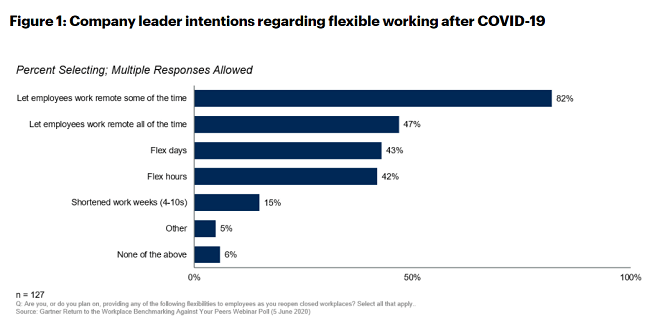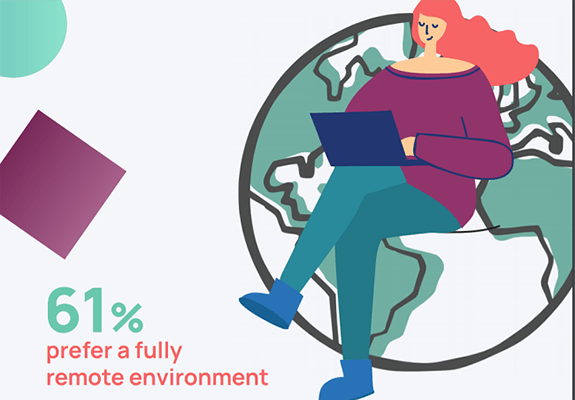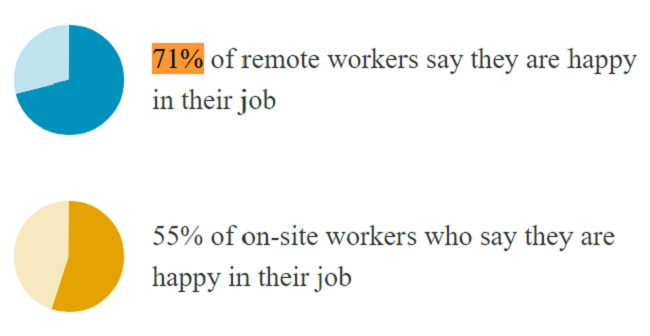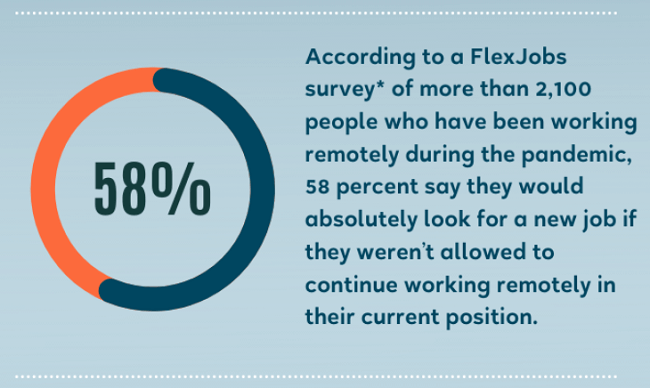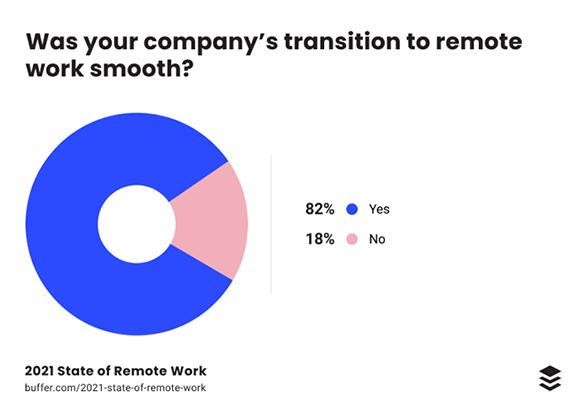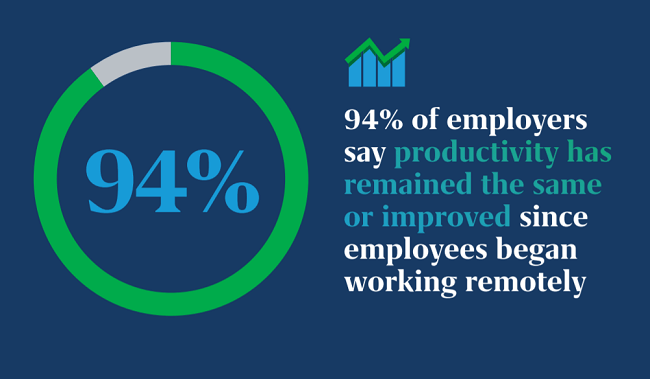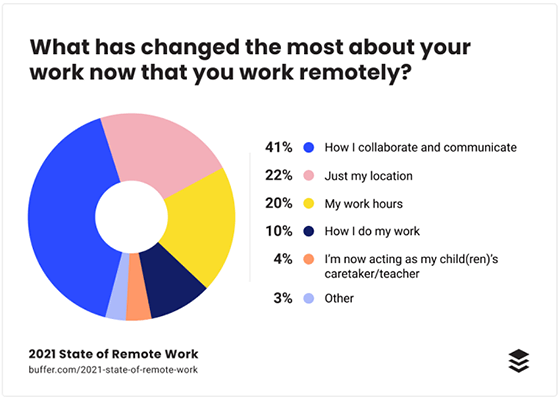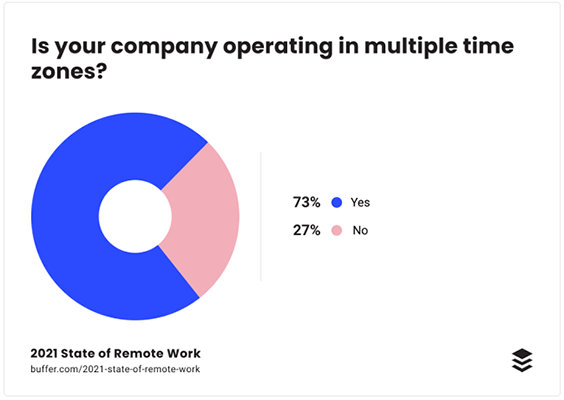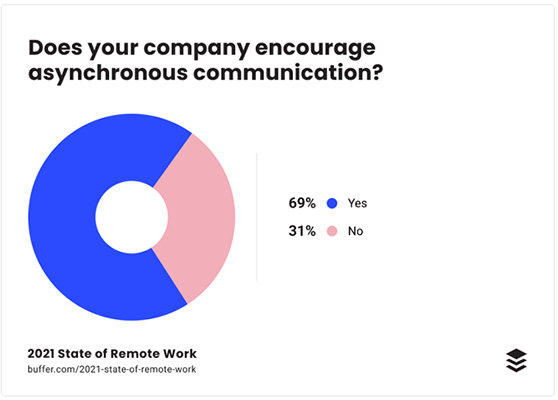47 Newest Distant Work Statistics, Info, And Traits (2021)
The last year or two have been incredibly influential for the remote work industry. As national lockdowns forced offices to close, employers across the world rushed to enable their workforce to continue to work from home.
But what can we learn from this global experiment into remote work? To answer that question, we’ve compiled a list of 47 of the latest remote work statistics.
The stats, facts, and trends below shed light into the current state of remote work and where it might be heading as we leave the pandemic behind us and move onto a new normal. We’ll be looking at data that can help us to answer important questions, such as:
- Will remote work be the new normal after COVID?
- How does remote work affect productivity?
- How do employees feel about remote work?
- What percentage of people work remotely?
- What industries is remote work a good fit for?
And many more! Ready? Let’s get started.
Remote work uptake statistics and trends
Let’s start by taking a look at some statistics that shed light on the state of remote work this year. Here are some facts and figures about how widespread the adoption of remote work currently is, and where it’s predicted to go from here.
1. Remote work in the US grew by 159% between 2005 and 2017
In just over a decade, the number of remote workers in the US alone more than doubled. This shows that the shift towards remote work started long before the pandemic struck. And as we’ll soon discover, the number has grown even more (a lot more) since then. (Source: Flexjobs3)
2. 36.2 million US workers will be remote by 2025
It’s estimated that in just a few years, there will be over 36 million remote workers in the US. That represents an 87% increase from pre-pandemic rates. (Source: Upwork)
3. 76% of entrepreneurs think remote work will be the ‘new normal’…
Remote work doesn’t seem to just be a temporary fix. As this statistic shows, most entrepreneurs think it’s here to stay. (Source: Growmotely)
4…. and 74% of professionals feel the same
It’s not just entrepreneurs that think remote work will be the new standard as we leave the pandemic behind us. Almost three-quarters of professionals feel the same way. (Source: Growmotely)
5. 82% of company leaders plan to allow employees to continue to work remotely at least some of the time post-pandemic…
The vast majority of decision-makers have no plans to go fully back to the way things were and will continue to let employees work from home at least some of the time. There are many advantages to this ‘hybrid’ model of remote work. (Source: Gartner)
6. …and 47% plan to allow them to work from home full time
While some employers plan on adopting a part-remote, part-on-site work culture going forward, more than half will allow employees to continue to work from home all of the time. (Source: Gartner)
7. Remote job listings on online job boards have increased substantially
Remote positions listed on Flexjobs increased by 12% between July and August alone. This trend isn’t surprising, given the meteoric rise in remote work as a result of the pandemic. (Source: Flexjobs1)
8. 41.8% of the US workforce were working remotely 9 months into the pandemic
Think about that for a second. That’s almost half of the entire workforce out of the office. Such a figure would have been unthinkable a decade or so ago. (Source: Upwork)
9. 24% of companies in the US already had more than half of their workforce working remotely pre-COVID-19
The US has long led the way when it comes to remote enablement, even pre-pandemic. The figure above puts them five percentage points above the global average of 19%, and eight percentage points above Europe (16%).
And if you thought 24% was already a lot, you’ll be shocked to hear it’s risen to a whopping 75% during the pandemic. (Source: Cisco)
Remote work sentiment statistics
One of the most important questions organizations thinking about remote enablement ask is: how do employees feel about remote work? Fortunately, the last year or so has given many workers the chance to try it out and see if they like it.
Here are some statistics that relate to employee sentiment regarding remote work.
10. 61% of working professionals would prefer a fully remote position
Others would like a degree of flexibility between working remotely some of the time and having access to an office or co-working space when needed. (Source: Growmotely)
11. 81% of remote workers think they’d be more loyal to their employer if they offered flexible work
Did you hear that employers? If you’re trying to get your employee turnover rate down and want to boost loyalty, offering a flexible work schedule may be the way to go. (Source: Flexjobs1)
12. 71% of remote workers are happy in their jobs
That’s compared to just 55% of on-site workers. There’s been a lot of concern that working remotely might lead employees to feel isolated and unhappy, but this statistic suggests that the reverse may be true. (Source: Owl Labs)
13. 73% of remote workers believe working from home provides a better work-life balance
And if you ask me, they’re probably right! Amongst that 73%, 46% specifically appreciate being able to spend more time with their family. (Source: Flexjobs1)
14. 79% of remote workers think the lack of commuting improves their lives
Being able to work from home cuts out commuting time and means employees can spend more time at home, doing the things they enjoy. Not only that, but it cuts costs too. 72% of survey respondents specifically appreciated being able to save money on their usual commuting costs. (Source: FlexJobs1)
15. 97% of people would recommend remote work to others
Given all of the above benefits, it shouldn’t come as a surprise to hear that only 3% of remote workers wouldn’t recommend it to their friends. (Source: Buffer)
16. Most workers think they don’t need to hear from their boss every day
Another fear company leaders have about going remote is that workers won’t be able to communicate with management as easily. However, as this stat shows, most feel they don’t need to!
31% of workers say that speaking to their boss just a few times per week is enough, 27% say they only need to speak to them once a week, and 22% would prefer to do so as little as possible. (Source: Flexjobs2)
17. Only 3% of people want to work full-time in an office post-COVID
Now that they’ve had a taste of what remote work is like, only a tiny fraction of the workforce wants to go back to the office once the pandemic is mostly behind us. (Source: Growmotely)
18. 58% of workers would look for a new job if they can’t continue working remotely
HR managers, take note. Employees like working remotely so much that they’re willing to quit and look elsewhere if it’s taken away from them. Amongst the top concerns about returning to the office were changes to their daily routine (27%), a return to office politics (34%), health and safety (32%), and being away from family (26%). (Source: Flexjobs2)
Remote work income statistics
How much do remote workers earn compared to traditional on-site workers? Let’s find out. Here are some remote work statistics related to income.
19. Remote workers are 2.2x more likely than on-site workers to earn over $100,000/year
To break that down a little further, 74% of remote workers earn less than $100,000 per year, compared to 92% of on-site workers. There could be many reasons for this difference in income. For example, it may be that jobs in industries where remote work is more prevalent (like architecture and engineering) have higher average salaries. (Source: Owl Labs)
20. Remote workers make 7.5% more than on-site workers
That’s not accounting for their job role, experience, or location. Even compared to on-site workers in the same job, with the same qualifications, remote workers make 8.3% more on average. (Source: PayScale)
21. 34% of people would accept a pay cut of up to 5% if they could work remotely
Despite the fact that remote workers typically earn more, over a third of surveyed workers would accept a pay cut if they could work from home. The upshot of this is clear: employees see being able to work remotely as a very big job perk. (Source: Owl Labs)
22. 38% of remote workers estimate they’re saving over $5,000 per year by working remotely
That works out at around $200 per week. Most of those cost savings likely come from commuting costs like petrol/gas and train tickets. (Flexjobs2)
Remote work preparedness statistics
The recent pandemic required organizations to very quickly adapt and enable employees to work remotely. How prepared were companies across different sectors for this sudden shift in operations? Here are some statistics that shed some light on that question.
23. 93% of companies globally said they were prepared to make the transition to remote work
To be more specific, 53% said they were somewhat prepared, and 40% said they were very prepared. Only 6% claimed they were unprepared to transition to remote work. This suggests many companies had seen the shift to remote work coming and had already laid the foundations prior to the pandemic. (Source: Cisco)
24. The Architecture and Engineering industries were the most prepared for remote transformation
72% of companies in these industries were at least somewhat prepared for the shift to remote work. That’s the highest of any percentage of any industry, and significantly higher than the global average of 53%. (Source: Cisco)
25. The Wholesale/Distribution and Education industries were the least prepared for remote transformation
15% of wholesalers and 14% of companies in the distribution industry claimed to be unprepared for the shift to remote work. That’s significantly higher than the global average of 6%. (Source: Cisco)
26. Vietnamese organizations were the most prepared to transition to remote work
67% of Vietnamese respondents in a recent Cisco survey claimed their organizations were prepared for remote work. This figure was higher than in any other country. Organizations in the UK were the second most prepared, at 59%. (Source: Cisco)
27. 82% of people say their company’s transition to remote work was smooth
Employers might have been biting their fingernails about shifting to remote work, but most employees seem to have barely noticed any bumps in the road. (Source: Buffer)
Remote work and productivity
One of the biggest fears companies have regarding remote work is how it will affect productivity. With employees working from home, many business leaders have been concerned that they’ll be more distracted and less focused on the job.
Is there any truth to this? As the statistics below prove, the answer is probably not!
28. 94% of employers think remote work hasn’t hurt productivity
67% of employers felt productivity remained the same, while 27% felt it increased. Only a measly 6% felt productivity dropped when shifting to remote work. This somewhat surprising statistic is great news for any businesses out there that are still on the fence about whether or not to go remote. (Source: Mercer)
29. 51% of people think they’re more productive when working from home
And the vast majority (95%) think their productivity has either stayed the same or increased. (Source: Flexjobs1)
30. 68% of people attribute the productivity boost to fewer interruptions
If you thought working from home would lead to more distractions, think again. It looks like the opposite is true. When asked about the reasons for their increased productivity, 68% of respondents in a recent survey put it down to having to deal with fewer interruptions. (Source: Flexjobs1)
31. 68% of people think they’re more productive due to the quieter environment
Getting away from the noisy office can help workers to stay focused, thus making them more productive. (Source: Flexjobs1)
32. 66% think their productivity is greater because they’re more comfortable
Being able to work in your pajamas from the comfort of your couch is certainly one of the biggest perks of working from home – but who would have thought it’d actually make you more productive too? (Source: Flexjobs1)
33. 55% cite being able to avoid office politics as the reason they’re more productive
Being able to work remotely outside of the office puts some distance between you and the politics of the workplace. That, in turn, means you can devote more of your attention to the work tasks at hand. (Source: Flexjobs1)
34. Remote employees say they work over 40 hours per week 43% more often than on-site employees
If you thought enabling employees to work from home would encourage laziness, think again. As this statistic shows, remote employees are actually more likely to work longer hours than their on-site counterparts. (Source: Owl Labs)
Remote work challenges and drawbacks
As you can see, there are a lot of benefits to remote work. However, it’s not all good news – there are also some drawbacks. The statistics below tell us more about the challenges workers and employers face when going remote.
35. 49% of remote workers report that they miss seeing their colleagues
Working from home means fewer opportunities to interact with your colleagues in person. Being deprived of this social interaction can lead to feelings of isolation and damage morale. (Source: Flexjobs1)
36. 11% of remote workers report feeling lonely
This is another one of the biggest drawbacks to remote work. When you no longer have your workplace as a social outlet, it’s important to make more of an effort to socialize and be around others outside of work. This can help to stave off loneliness and improve mental health. (Source: Flexjobs1)
37. 7% of remote employees feel more distracted at home
While this is certainly a challenge, it’s important to remember that 7% is a relatively small fraction. (Source: Flexjobs1)
38. 20% of those working remotely find it hard to unplug
One-fifth of remote workers find it hard to ‘switch off’ from work when working remotely. This is one of the biggest arguments against working from home.
To combat this, you might want to try working outside of your home, such as from a coffee shop. Alternatively, create a dedicated office space within your home and only go there during work hours. Speaking of building an office… (Source: Flexjobs1)
39. 90% of workers had to spend money building a home office in 2020
Of these workers, 12% spent over $1,000. That’s a very big expense. Hopefully, many companies will have subsidized some of these costs or provided the necessary equipment so that their employees aren’t left out of pocket. (Source: Flexjobs2)
40. 58% of people say technical issues are the biggest challenge of video meetings
Working from home means switching from office meetings to virtual Zoom meetings. The biggest challenges of these virtual meetings are the technical headaches that come with them, like frozen screens and connection issues. (Source: Flexjobs2)
Miscellaneous remote work statistics
Before we wrap up, here are a few more useful statistics about remote working that didn’t quite fit in any of the categories above. Enjoy!
41. Schedule flexibility is twice as important to remote workers
73% of remote workers want a flexible working schedule, compared to just 38% of people that work on-site. (Source: Owl Labs)
42. 41% of remote workers say the thing that’s changed the most is how they collaborate
This makes a lot of sense. Working with others is very different when you’re not in the same physical space. Instead of boardroom meetings, workers have to rely on email communications and Zoom meetings. (Source: Buffer)
43. 35% of remote workers are parents or caregivers
Remote work is especially useful to people with dependents. Allowing parents to work remotely means they don’t have to worry about childcare during their working hours. (Source: Buffer)
44. 73% of companies with remote workers operate in multiple time zones
Interestingly, almost three-quarters of organizations that hire remote workers have employees located in different time zones across the world. This presents many logistical challenges. (Source: Buffer)
45. 59% of companies have employees scattered across 2-5 timezones
Of companies that operate across different timezones, the majority have employees in just 2 to 5 timezones. 19% have employees in 6 to 10 different timezones, and 12% operate across 16 or more timezones. (Source: Buffer)
46. Nearly 70% of remote work companies encourage asynchronous communication
Many remote companies are seeing the benefits of asynchronous communication as a solution to the logistical problems of working across timezones. Asynchronous communication refers to when employees are able to communicate without being present at the same time. (Source: Buffer)
47. 93% of European companies changed their cybersecurity policies to support remote working
Shifting to remote work has major consequences from a cybersecurity perspective. Instead of working from the office computers, remote workers may have to access work files from their own private laptops and desktop computers, and through their own private internet connections. As a result, companies have had to alter their cybersecurity policies. (Source: Cisco)
Remote work statistics sources
Final thoughts
There you have it – 47 of the latest statistics about remote work. So, what can we learn from all of the above? Well, here are some key takeaways:
- Adoption of remote work is growing and will likely continue to do so post-pandemic.
- Remote workers are generally happier, more engaged, and more loyal employees.
- Productivity doesn’t suffer when people work remotely (on the contrary, it increases).
If you’re tired of working in the office and your employer won’t let you go remote, you can always start working for yourself. Find out how to grow your blog and ditch the office for good here.
Still hungry for more statistics? If so, you might want to check out our roundups of blogging statistics, social media statistics, or affiliate marketing statistics.
Note: Want our latest content delivered to your inbox? Click here to subscribe to the free Blogging Wizard newsletter.


